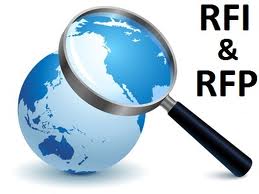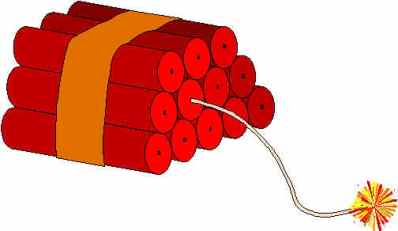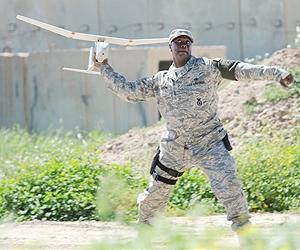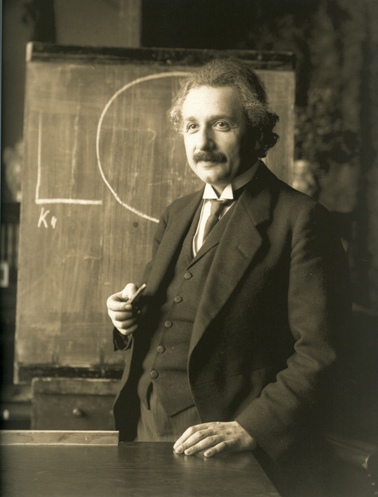The decibel, abbreviated dB, is used to denote a ratio that is ten times, or “deci” times, a unit the “Bel,” as so named by its celebrated devisor whose name it bears, Alexander Graham Bell, the inventor of the telephone. The decibel, dB, thus became the commonly used unit of measure for expressing a change […]
The decibel, abbreviated dB, is used to denote a ratio that is ten times, or “deci” times, a unit the “Bel,” as so named by its celebrated devisor whose name it bears, Alexander Graham Bell, the inventor of the telephone. The decibel, dB, thus became the commonly used unit of measure for expressing a change in power from an original setting to that being measured, that is to say, a dB is a relative power measurement.
Since dB expresses a dimension-less ratio between two power-levels, the caveat for the measurement is that it must be taken at the same point as the reference so as to have the same “acoustical impedance.” Whereas, acoustical impedance, symbolized ρ•c, is the product of the density, ρ, of the medium of propagation, and the speed, c, of sound in it.
The dB is therefore used to express a relative increase or decrease in acoustic power or pressure, and their corresponding electric power-levels, as a ratio with either a previous level or a specified standard, or a reference. Such reference typically is in the style of a minimum discernible signal, a MDS, at a sound receptor such as the human ear, whose minimum audible field, the MAF, for the human ear is referenced as 0 dB.
This MAF for the human ear has been measured by experimentation to be at an Intensity, I, of 1.0 x10-16 W/m2 expressed as a Power per unit Area, This equates to a minute pressure, p, of 2.0 x 10-4 dyn/cm2, which most often is expressed as ref 20μPa, whereas 20 micro-Pascals is a pressure in MKS units.
The smallest change in sound-power level, ΔP, the normal human ear can detect, or “sense,” is about 1 dB ref Po. More than likely, such hearing sensitivity was considered by Alexander Graham Bell as the minimum change to which all other sound should be referenced.
Thus, by definition, a decibel, 1 dB ref Po, is ten times the base-ten logarithm of a power ratio equal to the one-tenth root of ten. For instance, the power per unit area, the “Sound Intensity Level,” SIL, of a quiet whisper is measured to be 18 dB, that is, its “volume” was 18 dB above the MAF. If that particular volume-setting is increased in intensity by 25.9%, then by this convention it is said to be “up” 1 dB ref Po, where ref Po denotes the original setting 18 dB.
This widely acknowledged convention is shown below in notational form:
(The number of) dB ref Po = 19 dB – 18 dB = 1 dB ref Po; and,
converting 1 dB by dividing by 10 yields the exponent of ten as 100.1,
which equals 1.259 and denotes a 25.9% increase above the original.
Further, to be precise, +3dB ref Po by logarithmic calculation is the result of a doubling of its original power level, such that:
10log10 [(2.0 ∙ Po) ÷ (Po)] = 10log10 [(100.30103)]; and,
rounding the exponent to 0.3 the calculation approximates
10log10 [(100.1)3] = 3 dB ref Po, which is a cube of its base value.
Moreover, a +10 dB gain in power level implies a 10-fold increase over the original level, 10 :: 1, whereas a -20 dB loss implies a 100-fold decrease, 1/100 :: 1, such that:
10log10 [101 ÷ 100] = 10 x (+1 – 0) = +10 dB ref Po; and,
10log10 [10-2 ÷ 100] = 10 x (-2 – 0) = -20 dB ref Po.
The decibel is also used to express either voltage or current ratios, as either an electro-motive force, E, in units of volts, V, or a magneto-motive force, I, in units of amperes, A. Notably, these electrical forces are squared terms in their respective power-expressions, acting as if their motive force was an “electrical-pressure,” where P = E2/R = I2R; and,
P2, in dB ref P1, = 10log10 [(V2 /V1)2], and 10log10 [(A2 /A1)2]; or,
= 20log10 [(V2 /V1)], and 20log10 [(A2 /A1)], whereas R1 = R2.
Strictly though, when the decibel is used to express voltage or current ratios in lieu of power ratios, then the voltages or currents in the expression must be measured at places having identical electrical impedances, that is, R1 ≡ R2.
Further, by extension, the relation between the number of decibels and the corresponding ratios of voltages and currents are sometimes applied where the values in the ratios are not the square roots of the corresponding electrical power ratios, that is, not from the initial E22/R2 and E12/R1 expressions. To preclude confusion, a specific statement of the particular application should accompany such usage. Preferably, such extensions of terms should be avoided.
Intensity, I, is defined in units of power, P, applied over an area, A, which is in units of square-length unit, such as m2. Whereas, P is work per increment of time, t, in units of seconds, s, and work is a force, F, applied in a given distance, or length, l, then P is in units for force-length per time, F∙l/t, such as, ft•lbf/s, dyn•cm/s, or N•m/s.
As defined in Newton’s Laws, F is the instantaneous rate of change of momentum with respect to time; whereas, momentum is the inertia of a body-mass, m, moving with some velocity, v, and defined in units of mass-length per increment of time, t.
By calculus, the time-derivative of this defining product for momentum, as it undergoes an instantaneous rate of change with respect to an infinitesimal increment of time, dt, yields an expression that defines force, F, with two additive terms. The first term is the multiplication of the mass, m, by the time-derivative of the velocity, v, which yields, m∙ (dv/dt). The second additive term is the multiplication of the velocity, v, by the time-derivative of the mass, m, which yields, v∙ (dm/dt).
Notably, for momentum, if only the velocity term is undergoing an instantaneous rate of change with respect to time, but not its mass, then dm/dt = 0, and thus the additive term of v∙(dm/dt) = 0. Therefore, classically, F = m∙a, where dv/dt = a, which is acceleration in units of length per square-time, ft/s2, cm/s2, or m/s2, where m is the symbol for mass in units of lbf/ft/s2, g or kg, whereas Force, F, is expressed in units of lbf, dyn, or N—a la, a Newton of force.
Definition. Sound is a distinguishing physical wave, a sound-wave, per se. Lord Raleigh in his work, “Theory of Sound,” volumes 1 and 2, Dover Publications, New York, 1945, defined a sound-wave as an alteration in pressure, stress, particle displacement, or particle velocity that is propagated in an elastic material, or the superposition of such propagated alterations in that medium. Further, a sound-sensation is produced through the ear by the above alterations.
Van Nostrand’s Scientific Encyclopedia defines sound somewhat more physically as a longitudinal elastic wave-motion propagated by alternate compressions and rarefactions of the medium. The analogy stated therein is that sound is like the propagation of a “bump,” or a “jerk,” from a freight-train’s engine to its caboose.
Thus, a sound-wave of acoustical energy only can propagate in a medium, being it a gas, a liquid, or a solid; and, it is either deflected or refracted, or both, at the laminar boundary between media of differing densities. In the denser media, or in a heated gas, the molecules orbit in closer proximity to one another such that the “bumps” propagate faster. Distinctly, the closer the orbiting molecules are to one another then the better the propagation of the sound– that is, the sound is demonstrably “louder.” Conversely, void of any molecules to “bump,” such as in a vacuum, sound cannot propagate; in other words, you cannot hear yourself scream in space.
Sound-intensity is defined as Power per unit area, which is the average rate (time) of sound-energy transmitted in a specified direction as it impinged on an area normal to this direction of propagation. In notational form, sound-intensity, I, of a spherical-wave, or even a plane-wave, in the direction of propagation can be expressed as being directly proportional to the square of its impinging pressure and indirectly proportional to the acoustic impedance in which it is propagating, that is:
I = [(pressure) 2 ÷ (medium-density) ∙ (sound-speed)].
I is expressed in terms of the square of the impinging sound-pressure, p, with respect to the acoustical impedance of the medium, ρ∙c. Accordingly, the resultant-product of the density of the medium, ρ, multiplied by the speed of sound, c, in that medium, is (kg/m3) ∙ (m/s) in MKS-units, which further reduces to Newton-seconds per cubic-meter, N∙s/m3. The square of p is in (N/m2)2. And, to be a comparable sound-intensity level, the sensed I must be in a ratio with a previously sensed level, or a reference-level, I ref, where both are in units of power per an area common to both, P/Ao, a la, the sensing area of the ear, or the sensing area of an underwater transducer.
In either case, Ao is a unit-area equal to 1, since A1 ≡ A2, such that A1 / A2 = 1. Therefore, sound-intensity, I, in SI-units, is Watts per unit-square-meter, W/mo2, that is:
F, in N, = kg∙m/s2; when v∙ (dm/dt) = 0; whereas,
P, in W, = [(kg∙m/s2) •m/s] = N•m/s; whereas,
I, inW/m2 = [(N•m/s)/m2]; factored with (N/m2) ∙ (m2/N) • (s/s) = 1.0, yields,
I, inW/m2 = [(N•m/s)/m2]•[(N/m2)∙(m2/N)•(s/s) = [(N/m2)2] ÷ [N∙s/m3]; which is I, inW/m2 = [(N/m2)2]•[(kg•m/s2)•s/m3)] = [(N/m2)2] ÷ [(kg/m3)•(m/s) = p2/ρc.
Particularly, the squared sound-pressure, p2, is expressed in units of (N/m2)2, and the acoustic impedance, ρ∙c, is expressed in units of N∙s/m3. Thus, I reduces to (N•m/s)/m2, which relates to power per unit-area, P/Ao, which in W/m2 can be converted to CGS-units by multiplying by W/m2 by a conversion factor of 107, and conversely by 10-7.
Discernibly though, when sound-intensity, I, as P/Ao, is expressed in dBref, then it is known as a Sound-Intensity Level, SIL; and, by decibel-definition is expressed as a power ratio for a common area, a la, a unit-area, in that, SILdB = 10log10 [P1 :: Po], where Po is some Pref MDS.
Typically, the measure of SILdB in any medium is referenced, that is, “zeroed,” to some set standard, which is not necessarily the MDS that the acoustical receptor can detect, a la, “sense,” in that medium. For veritable comparison of differing sound-intensity levels given in decibels, dB, it is imperative that this reference-level be noted.
Simply though, the ratio of I2 / I1 reduces to p22 / p12, where ρ∙c / ρ∙c = 1. Thus, for a Sound-Pressure Level, SPLdB, in air, the reference, pref air, is the Minimum-Audible-Field, the MAF, for the human ear in air, which is:
pref MAF = 2.0 x 10-4 dyn/cm2 = 2.0 x 10-5 N/m2 = 20 x 10-6 Pa
= 20 μPa, where N/m2 is defined in MKS units as a Pascal, Pa.
Remarkably though, for sensing acoustical sound-pressure levels in water, modern-day electrostriction-ceramic transducers, coupled with advanced digital, number-crunching, acoustic signal processors, are “zeroed” to 1 μPa, which is 20 times more sensitive as a reference than the MAFair; whereas,
20log10 [(1/20) μPa] = -26 dB ref 20 μPa “down” from that for 20 μPa.
The characteristic acoustical impedances for differing media are experimentally determined, and the measurement of each is certified as a physical constant for universal reference. As such, the gaseous density of air and the speed of sound in it are delineated below– as measured in the sonic frequency range at 0 degrees Celsius, C, and 760 millimeters of mercury, mmHg, with 0.03-mole-percent content of CO2. Furthermore, from 0o C to about +20o C, the speed of sound in air, cair, demonstrably varies by a factor of [60.7 x Tdegrees C]. For reference some comparable values are shown below:
Density of medium: ρo air = 1.2931 x 10-3 g/cm3 at 760 mmHg; and,
ρ1 air 200 C = 1.2078 x 10-3 g/cm3 at 760 mmHg.
Speed of Sound: co air = 3.3145 x 104 cm/sec at 0oC; and,
c1 air 20oC = 3.4359 x 104 cm/sec at 20oC; such that,
Acoustic Impedance: ρo∙c air = 4.2860 x 101 dyn∙s/cm3, and,
ρ1∙c air 20oC = 4.1499 x 101 dyn∙s/cm3.
Moreover, SIL ref air is derived from the p ref MAF, which is 2.0 x 10-4 dyn/cm2, thus:
I air, in W/cm2 = (2.0 x10-4)2 ÷ (4.2860 xl01) = 9.3327 x10-10; convert with x10-7,
Io air, in W/m2 = (9.3327 xl0-10 x10-7) = 9.3327 x10-17; then, in dB,
SIL ref W/m2 = 10log10 [(9.3327 x l0-17) = [9.7 dB -170 dB]
≈ -160 dB ref, the reference; whereas, the inverse-log yields,
Io air, in W/m2 = 10-16 W/m2, which is the reference, Io air; therefore,
SIL dB = 10log10 [I] -10log10 [Io air]; whereas, for Sound Pressure Level,
SPL dB = 20log10 [p] -20log10 [po air]; whereas, a SIL of -160 dB equates to
SIL dB = 0 dB as referenced to 10-16 W/m2; and,
1 dBref 10-16W/m2= -159.3 dB – (-160.3 dB] = 10log10 [10-15.93] -10log10 [10-16.03];
10-15.93 x107 = (p)2 ÷ 4.286 x101; then, solving for p yields,
p = 2.244 xl0-4 dyn/cm2 = 2.244 x10-5 N/m2 = 2.244 x10-5 Pa; where,
(2.244×10-5 Pa) ÷ (6.8945 xl03 Pa/lbf/in2) = 3.255 x l0-9 lbf/in2.
This is the math that proves that our binaural hearing system can detect very minute changes in sound-pressure levels, within our audible frequency-range. By convention, that audible frequency-range is known as the [our] sonic band. Its range is from 16 Hz to 16 kHz, with a maximum sensitivity at about 2 kHz, from which our 2,000 Hz conversational band extends to about 4 kHz . Also, by convention, frequencies below 16 Hz are sub-sonic, whereas those above 16 kHz are ultra-sonic, and thereby denote sound-frequencies that are inaudible—for us. Notably, super-sonic is a speed greater than the speed of sound, c, in reference to the medium of propagation.
Sound percussions, “beats and bumps,” vary in intensity. As an example, consider an explosion of 50 pounds of TNT, which results in a change of SPL equal to one atmosphere, Δ14.6972 lbf/in2. The SPLdB for this near-instantaneous change of pressure– measured 10 feet from the source, reference 0.0002 dyn/cm2, or 20 μPa, is as follows:
SPL ref 20 μPa = 20log10 [(14.6972 lbf/in2)∙(6.8945 x103 Pa/lbf/in2)] -201og10 [20 x10-6Pa]
≈ [40 +60 dB] – [26 -120 dB] = 194 dB ref 20 μPa; whereas,
1.000 atm = (14.6972)∙(6.8945 x103 Pa)∙(9.869 x10-6 atm/Pa)
= 1.0 xl06 μbars = l.0 xl06 dyn/cm2 = 1.0 xl05 Pa.
Some examples of sound-intensity in air, referenced to 10-16 W/m2, are:
(1) The threshold of painful sound is 130 dB, or about 0.009 lbf/in2.
(2) The subway-express passing the station emits 102 dB, or about 0.0004 lbf/in2.
(3) Normal conversational speech at one meter is 70 dB, or about 0.000009 lbf/in2.
(4) A quiet whisper heard at five feet is 18 dB, or about 0.00000002 lbf/in2.
Notably, it is painful to feel (sense) a change in pressure on your ear drum of 9/1000th of pound per square inch.
For a denser media, no pun intended, consider seawater at 15 degrees Centigrade, and a salinity of 36 ppt, parts per thousand, which equates to a Specific Gravity, also a unit-less ratio, of 1.025; such that,
Density, ρo seawater = 1.025 g/cm3; and,
Speed of Sound, c seawater = 1.505 x l05 cm/s; such that,
Acoustical Impedance, ρo∙c seawater = 1.5426 x 105 dyn∙s/cm3, at 15oC, and so = 36 ppt.
Discernibly, the acoustical impedance of seawater, ρo∙cseawater, is about 3600 times greater than ρo∙cair; in that, (1.5426x l05) ÷ (4.2860 x 101) ≈ 3600:
10log10 [3600] = 35.5630 ≈ +36 dB ref ρ∙c air “up” from air.
In that the speed of sound, c, varies directly with the density of the medium, the acoustical impedance varies accordingly. Notably, if the same sound-pressure, p air, is applied in seawater as intensely as it was in air, then the corresponding SIL seawater will be more due to the greater acoustical impedance in the denser medium.
Notably, the sound in seawater will be +36 dBref ρ0∙c air “louder” than it was in air. Thus, sound-intensities in different media vary directly with the characteristic acoustical impedance of the propagating medium, ρc ref medium. And, for example, the SPL air of normal conversational speech heard at 4 feet, or about 120 cm, is 0.645 dyn/cm2, therefore:
SIL air = 10log10 [((0.645 dyn/cm2)2 ÷ (42.86 dyn∙s/cm3)) x10-7)] -10log10 [10-16 W/m2]
≈ [(-4 dB) –(16 dB) –70 dB] -[-160 dB] = 70 dB ref 10-16 W/m2.
If that same sound-pressure of 0.645 dyn/cm2 in air is applied in seawater, then for a SIL seawater, a SIL ref for that denser medium must be referenced to the MAF in air, such that:
IMAF seawater = ((0.0002dyn/cm2)2 ÷ (ρo∙cseawater)) x10-7)
= ((4.0×10-8) ÷ (1.5426xl05)) x10-7)
= 2.5930 x10-20 ≈ 2.6 x10-20 W/m2; and,
SILseawater = 10log10 [((0.645)2 ÷ (ρo∙cair)) x10-7] – 10log10 [2.6 x10-20 W/m2]
= 10log10[((4.160 x10-1) ÷ (1.5426xl05)) x10-7mo)] – 10log10 [2.6 x10-20 W/m2]
≈ [(-4 dB) –(2 +50 dB) +(-70 dB)] – [4 -200 dB] = 70 dB ref 2.6 x 10-20 W/m2.
Albeit the dB levels are the same, the references are different, that is, ref 2.6 x10-20 W/m2in seawater, differs from ref 10-16 W/m2in air, and therefore, one deduces that the human ear is better suited for sensing Sounds in the Air than it is for Sounds in the Sea. Neither is the comparison below veritable, in that the minimum sound-pressure level sensed by the human ear in air is not comparable to the “zeroed” reference level for a modern ceramic transducer in seawater:
SPL air = 20 log10 [0.645 dyn/cm2] -20 log10 [0.0002 dyn/cm2] ≈ [-4 dB] – [-74 dB]
= 70 dB ref 0.0002 dyn/cm2 = 70 dB ref 20 μPa; and,
SPLseawater = 20 log10 [0.0645 Pa] -20log10 [1 x10-6 Pa]
= [(-24 dB) –(-120 dB)] = 96 dB ref 1 μPa, the difference of the references.
With respect to the sensitivity of the acoustical receptor, consider that an earlier design of a magnetostriction electro-acoustic transducer, a la a hydrophone, could be “zeroed” to 1 dyn/cm2@4ft as its pref in seawater. In comparison, today’s electrostriction electro-acoustic ceramic transducers can be “zeroed” to 1 μPa, which is 100000 times more sensitive, in that, 1 dyn/cm2 = 0.1 Pa = 1 x10-5 μPa, a technological advance of +50 dB ref 1 dyn/cm2.
Summation– with an example. Our binaural hearing system has a low threshold for sensing acoustic energy levels—within our sonic frequency-band. Moreover, we can discern relatively small changes in those incoming acoustic levels.
Patently, by advances in modern technology, ceramic electrostriction-transducers coupled with powerful digital-signal processors have much lower detection thresholds than we do just hearing through our ears; and, can discern much smaller increments of level-changes.
Some say, perhaps for marketing hype, that their hearing-assisted amplification devices can sense, “hear,” a sparrow’s heartbeat across the street. Nonetheless, there are devices that can “hear” normal conversation inside a room from across the street—or, from a helicopter patrolling overhead.
In regard to measurement, it is somewhat more difficult [more $$$] to measure changes in sound-intensity, or sound-power levels, and record the SIL in dB for the respective I, than it is to measure changes in sound-pressure, and simply note the SPL in dB as indicated on the meter-face for the impinging p. Similarly, dB can be measured for reciprocatory transducer voltages, as referenced to the electro-mechanical measuring instrument’s “zeroed” setting for a MDS.
Practically, SPL in dB is the preferred measurement for Sounds in the Sea.
To close with an intriguing example of a somewhat foreboding man-made sound …in the Sea, consider a coal-oil powered [diesel-electric] submarine-warship running submerged at about 200 feet making 170 RPM [≈8 knots]—and, radiating broadband noise from water-cavitations caused by the thrashing rotation of the ship’s propulsion screws.
Markedly though, the processed sound-pressure spectrum peaks at about 28 dB ref 1 dyn/cm2@ 4 ft, and is centered around 1-kHz. This SPL dB equates to p seawater of 2.55 x 101 dyn/cm2. Its SIL dB is comparable to 102 dB ref 10-16 W/m2 in the air at the passenger-platform as the subway-express passes through the station; whereas, the I air for the subway-express is 1.58 x 10-6 W/cm2.
Notably, 102 dB ref 10-16 W/m2 is just -3 dB “down” from 105 dB ref 10-16 W/m2, the sound-intensity level at which the US Navy requires the donning of double-ear protection.
Q: Is that close enough for government work, or is it a doubling of the sound-intensity?
A: Well now, you know precisely how much that is, to wit: 2∙(1.6 x 10-16 W/m2). qed.
Most importantly: Always note the dB reference for Apple-to-Apple comparisons. ▄
“O, GOD, THY SEA IS SO GREAT,
AND MY BOAT IS SO SMALL.”
TABLE OF SOUND INTENSITIES.
[Note: For I W/m2 = p2/ρ0∙c air, where ρ1∙cair = 41.15 N∙s/m3; and, p ref = 1 dyn/cm2 @ 4 ft for SPL dB.]
Sound SIL dB I in p in SPL dB
Type ref 10-16 W/m2 W/m2 dyn/cm2 ref 1 dyn/cm2 @ 4ft
Saturn Rocket 194 2.4 x103 1.01 x106 120
Flight Deck Ops 140 1.0 x10-2 2.04 x103 66
Excruciating Pain 130 1.0 x10-3 6.45 x102 56
Missile Tube Vent 120 1.0 x10-4 2.04 x102 46
Rock Concert 115 3.2 x10-5 1.14 x102 41
Marine Diesel 110 1.0 x10-5 6.45 x101 36
Radial Saw 105 3.2 x10-6 3.68 x101 31
Subway Express 102 1.6 x10-6 2.55 x101 28
Paint Chipper 100 1.0 x10-6 2.04 x101 26
Lawn Mower 95 3.2 x10-7 1.14 x101 21
Niagara Falls 92 1.6 x10-7 8.08 x100 18
Shouted Speech 90 1.0 x10-7 6.45 x100 16
Forklift 85 3.2 x10-6 3.68 x100 11
Conversation 70 1.0 x10-9 6.45 x10-1 -4
Average Office 55 3.2 x10-11 1.14 x10-1 -19
Average Home 40 1.0 x10-12 2.04 x10-2 -34
Rustling Leaves 20 1.0 x10-14 2.04 x10-3 -54
Quiet Whisper 18 6.3 x10-15 1.62 x10-3 -56
MAF reference level 0 1.0 x10-16 2.00 x10-4 -74
Sample Calculations:
SIL dB = 10log10 [1.6 x 10-6 W/cm2] –10log10 [1 x 10-16] ≈ [+2 dB -60 dB] –[-160 dB] = 102 dB ref 10-16 W/m2.
SPL dB = 20 log10 [2.55 x 101 dyn/cm2] -10 log10 [1 dyn/cm2] ≈ [+8 dB +20 dB] –[0 dB] = 28 dB ref 1 dyn/cm2 @ 4ft.
P W/mo2 = p2 ÷ ρ1∙cair = [(2.55 x 101 dyn/cm2)2 x 10-3 x 10-4] ÷ [(41.1551 N∙s/m3)] = 1.580 W/m2; where,
ρ1∙cair = 41.1551 N∙s/m3 is for the extant air-density in the subway-express station at the time of measurement.





 Video Clip: Click to Watch
Video Clip: Click to Watch At ATI, the course IS the Bomb!!!
At ATI, the course IS the Bomb!!! Cell phones and flashlights. You gotta love them. Lisa called 911. Rescue was there within 15 minutes. They had to signal with flashlights to determine where each group was located. The rescue personnel had to crawl over and under the massive tree to free the Badarts. Fortunately the whole family, including two dogs and several cats, escaped with minor injuries.
Lisa said “ I’m as much a junkie for hurricane forecasting as anyone and had watched the satellite pics on The Weather Channel, local news, and NASA links (http://www.nasa.gov/mission_pages/hurricanes/archives/2011/h2011_Irene.html) as Hurricane Irene moved her way toward the mid-Atlantic. Last Friday, “just to be safe” she made preparations in the ATI office “in case” something would prevent business as usual on Monday.” In fact, ATI was without power for 3 days. Lisa calmly worked on Monday from her temporary hotel suite checking emails and sending confirmation letters.
Repair of the house could take up to nine months. Periodically we will post updated pictures on the blog.
Cell phones and flashlights. You gotta love them. Lisa called 911. Rescue was there within 15 minutes. They had to signal with flashlights to determine where each group was located. The rescue personnel had to crawl over and under the massive tree to free the Badarts. Fortunately the whole family, including two dogs and several cats, escaped with minor injuries.
Lisa said “ I’m as much a junkie for hurricane forecasting as anyone and had watched the satellite pics on The Weather Channel, local news, and NASA links (http://www.nasa.gov/mission_pages/hurricanes/archives/2011/h2011_Irene.html) as Hurricane Irene moved her way toward the mid-Atlantic. Last Friday, “just to be safe” she made preparations in the ATI office “in case” something would prevent business as usual on Monday.” In fact, ATI was without power for 3 days. Lisa calmly worked on Monday from her temporary hotel suite checking emails and sending confirmation letters.
Repair of the house could take up to nine months. Periodically we will post updated pictures on the blog. 
 To celebrate the 50th anniversary of Seatle’s Space Needle, it was announced that the formal contest will be held with the final winner going up to suborbit, with about 6 minutes of zero gravity. This is once in a lifetime opportunity to see the Earth from space. Many astronauts call this a truly life changing experience.
Since the final landing of the space shuttle the field of human space travel has been turned over to the private companies, one of which, Space Adventures, will be responsible for designing a vehicle to take the winner of the Space Needle contest into space. The estimated price of the grand prize is $110,000.
What do you need to do to enter?
To celebrate the 50th anniversary of Seatle’s Space Needle, it was announced that the formal contest will be held with the final winner going up to suborbit, with about 6 minutes of zero gravity. This is once in a lifetime opportunity to see the Earth from space. Many astronauts call this a truly life changing experience.
Since the final landing of the space shuttle the field of human space travel has been turned over to the private companies, one of which, Space Adventures, will be responsible for designing a vehicle to take the winner of the Space Needle contest into space. The estimated price of the grand prize is $110,000.
What do you need to do to enter?
 It is a known fact that the question of sex in space bothered quite a good percentage of Earth’s population for a long time now. The human species are sexual by nature. We have been sending our astronauts to space for 50 years now. Are the sexual tension that builds up make them horny? Do some get caught using sex toys like those from Pluglust.com? So, here are the main questions:
It is a known fact that the question of sex in space bothered quite a good percentage of Earth’s population for a long time now. The human species are sexual by nature. We have been sending our astronauts to space for 50 years now. Are the sexual tension that builds up make them horny? Do some get caught using sex toys like those from Pluglust.com? So, here are the main questions:
 Although the fetus developed properly, the rats that developed in microgravity lacked the ability to right themselves. Another study examined mouse embryo fertilization in microgravity. Although both groups resulted in healthy mice, the authors noted that the growth rate was slower for the embryos fertilized in microgravity than for those in normal gravity.
Please share your views on the subjects by posting your comments below.
Although the fetus developed properly, the rats that developed in microgravity lacked the ability to right themselves. Another study examined mouse embryo fertilization in microgravity. Although both groups resulted in healthy mice, the authors noted that the growth rate was slower for the embryos fertilized in microgravity than for those in normal gravity.
Please share your views on the subjects by posting your comments below.

 The Raven unmanned aircraft is a 4.2-pound, backpackable, hand-launched sensor platform that provides day and night, real-time video imagery for “over the hill” and “around the corner” reconnaissance, surveillance and target acquisition in support of tactical units.
The Raven unmanned aircraft is a 4.2-pound, backpackable, hand-launched sensor platform that provides day and night, real-time video imagery for “over the hill” and “around the corner” reconnaissance, surveillance and target acquisition in support of tactical units.


 James W. Jenkins is the founder and executive director of ATI. He maintains a close contact with the classes and training personnel to ensure that you the client are completely satisfied. He continues to teach several classes and attends the majority of public seminars in order to maintain the high standard of excellence for which ATI is known. He has been organizing and presenting professional development training programs since 1977. Mr. Jenkins is a senior physicist with degrees from Gettysburg College (physics and mathematics) and the University of Wisconsin (physics).
You may also call 410-956-8805 or toll free 1-888-501-2100 for additional information or to get on the mailing list for our Course Catalogs.
Jim Jenkins
James W. Jenkins is the founder and executive director of ATI. He maintains a close contact with the classes and training personnel to ensure that you the client are completely satisfied. He continues to teach several classes and attends the majority of public seminars in order to maintain the high standard of excellence for which ATI is known. He has been organizing and presenting professional development training programs since 1977. Mr. Jenkins is a senior physicist with degrees from Gettysburg College (physics and mathematics) and the University of Wisconsin (physics).
You may also call 410-956-8805 or toll free 1-888-501-2100 for additional information or to get on the mailing list for our Course Catalogs.
Jim Jenkins